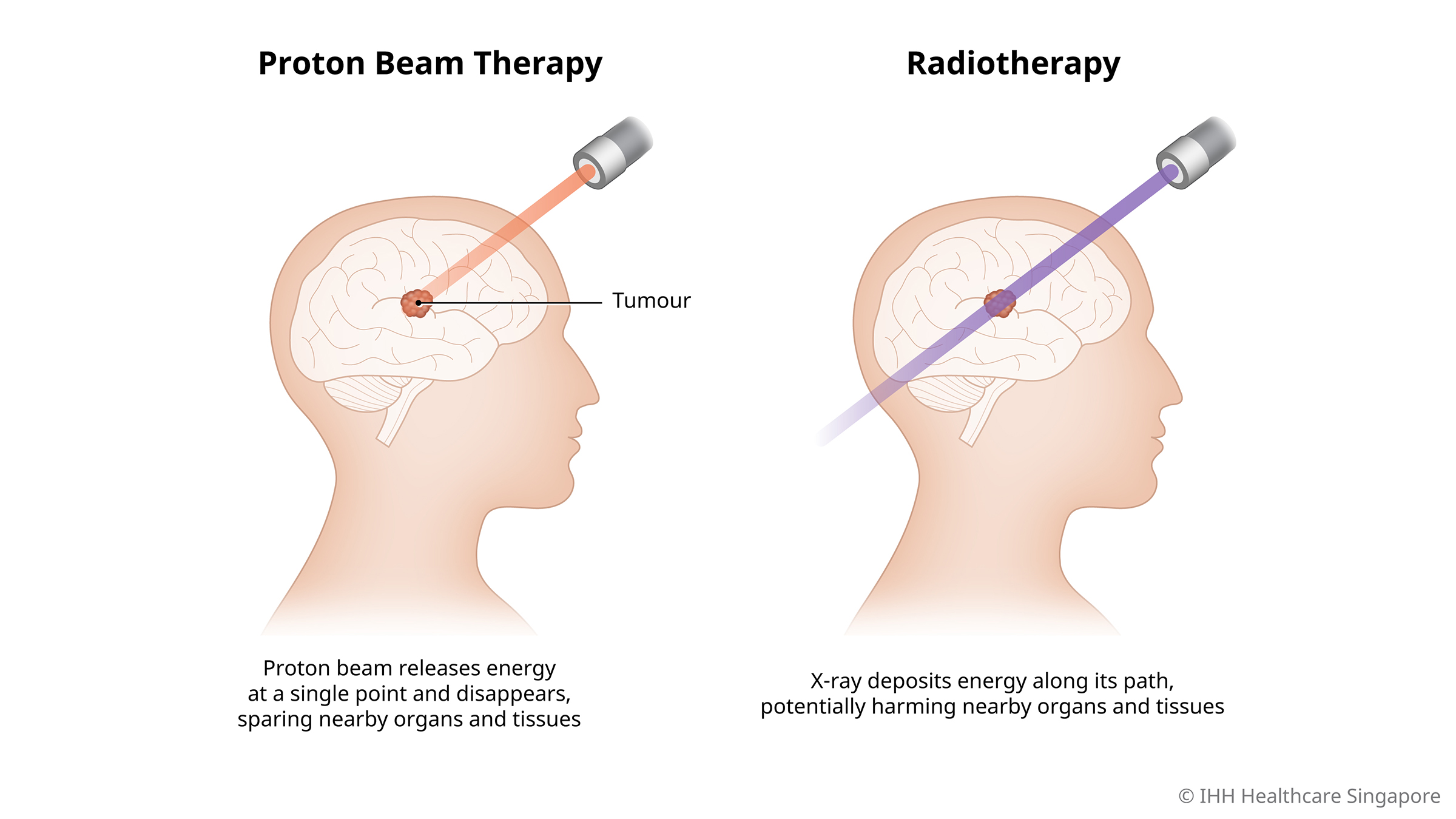What is proton beam therapy?
Proton beam therapy is an advanced form of radiation therapy used by radiation oncologists to treat cancerous and some non-cancerous tumours. It uses high-powered energy particles known as protons instead of X-rays to directly deliver radiation to the tumours.
Proton beam therapy is often used as part of a treatment plan for cancer patients in conjunction with other surgery, chemotherapy or radiotherapy.
Proton beam therapy vs radiotherapy
Proton beam therapy delivers less radiation outside of the tumour by directing a beam of proton particles that stops at the tumour, so the chances of damage to nearby healthy tissues are low.
Traditional radiotherapy delivers X-rays, or photons, to the tumour and around it. This means that radiation therapy can harm surrounding healthy tissues and cause significant side effects such as fatigue, hair loss, and skin changes.
Benefits of proton beam therapy
- Minimises radiation exposure of healthy tissues
- Fewer short and long-term effects
- Lower integral dose per treatment
- Can treat recurrent tumors in patients who have already received radiation
- Potentially reduces the risk of secondary cancers
- Improve patient’s quality of life
Disadvantages of proton beam therapy
This newer form of treatment is not widely available as it requires highly specialised and advanced equipment. Due to the sophistication of its technology, proton beam therapy will also cost more than traditional radiation therapy.
Proton beam therapy, however, has been proven to be effective in adults and children, and is increasingly being used to treat cancer due to its few side effects, and minimal damage to surrounding healthy tissue and vital organs during the radiation process.
Learn more about how you can receive this treatment at Mount Elizabeth Proton Therapy Centre, and how to finance your treatment costs.
Why do you need proton beam therapy?
Proton beam therapy is used to treat advanced cancers, often in combination with other therapies such as surgery and chemotherapy. The procedure is also used to treat cancer that remains or comes back after X-ray radiotherapy.
Proton beam therapy can be used to treat conditions such as:
- Head and neck tumours
- Brain tumours
- Spine tumours
- Breast tumours
- Liver cancer
- Lung cancer
- Oesophagal cancer
- Eye melanoma
- Lymphoma
- Pancreatic cancer
- Pituitary gland tumours
- Prostate cancer
- Sarcoma
Who should not undergo proton beam therapy?
Proton beam therapy may not be suitable for patients who are:
- Pregnant
- Have systemic lupus erythematosus, scleroderma, and other connective tissue disorders
What are the risks and complications of proton beam therapy?
Proton therapy is considered to be a safe and efficient form of radiation therapy. and has few side effects compared to traditional radiation therapy.
Nonetheless, protons may still transmit some of their energy to nearby tissues to a small degree, and cause side effects such as:
- Fatigue
- Hair loss, skin redness and soreness around the body part being treated
- Established_In
- Hospital_Grade



